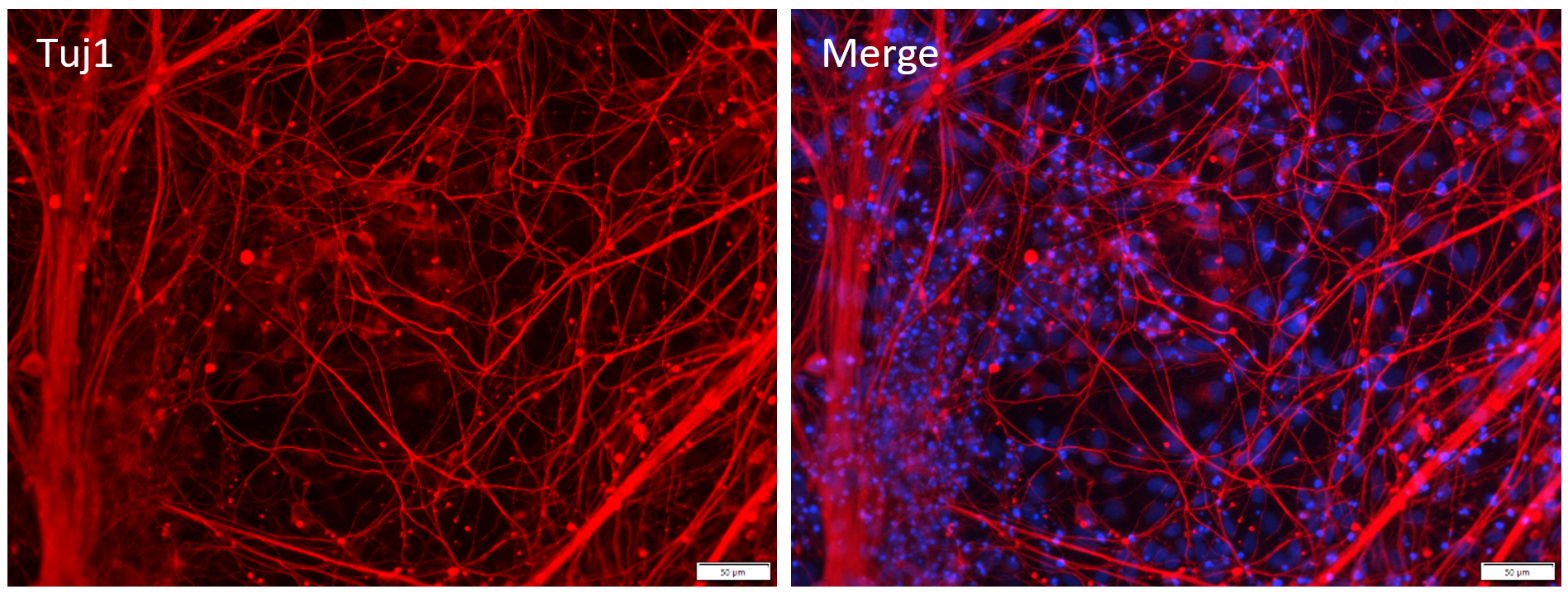Newsletter
iPSC Cortical Neurons
Ready-to-use cortical neurons derived from the ASE-9211 Master iPSC Line are now available. With our optimized differentiation protocols, we have successfully produced high-quality cortical neurons. These cells express high levels of the biomarker Tuj1. The iPSC-derived cortical neurons are ideal for experimental control, co-culture modeling, screening drugs for neurotoxicity, and for gene profiling studies in association with astrocytes and dopamine neurons.
Advantages of Applied StemCell's cortical neurons:
- High purity cortical neurons: Tuj1+
- High cell viability of cryopreserved neurons
- Long-term viability in cell culture
- Used in co-culture assays for expanded model functionality
- GMP iPSC Products & Services >> Learn More
Custom Differentiation Service for iPSC-derived Neurons: We offer direct differentiation of your control/patient/engineered iPSC lines into functional cortical/motor neuron lineages, including full characterization of the derived cell lines.
Products and Services
Case Studies
Case Study 1
Characterization of iPSC-derived Cortical Neurons (ASE-9741)

Figure 1. Immunostaining of ASE-9741 iPSC-derived Cortical Neurons for a cortical neuron biomarker. Cryopreserved cortical neurons, differentiated from Applied StemCell’s control iPSC line ASE-9211, were stained with Tuj1. (Red: Tuj1; Blue: DAPI)
Publications
iPSC-differentiated cell lines
- Gupta, G., Gliga, A., Hedberg, J., Serra, A., Greco, D., Odnevall Wallinder, I., & Fadeel, B. Cobalt nanoparticles trigger ferroptosis‐like cell death (oxytosis) in neuronal cells: Potential implications for neurodegenerative disease. The FASEB Journal.
- Shaltouki, A., Sivapatham, R., Pei, Y., Gerencser, A. A., Momčilović, O., Rao, M. S., & Zeng, X. (2015). Mitochondrial alterations by PARKIN in dopaminergic neurons using PARK2 patient-specific and PARK2 knockout isogenic iPSC lines. Stem cell reports, 4(5), 847-859.
- Efthymiou, A. G., Steiner, J., Pavan, W. J., Wincovitch, S., Larson, D. M., Porter, F. D., ... & Malik, N. (2015). Rescue of an in vitro neuron phenotype identified in Niemann-Pick disease, type C1 induced pluripotent stem cell-derived neurons by modulating the WNT pathway and calcium signaling. Stem cells translational medicine, 4(3), 230-238.
- Efthymiou, A., Shaltouki, A., Steiner, J. P., Jha, B., Heman-Ackah, S. M., Swistowski, A., ... & Malik, N. (2014). Functional screening assays with neurons generated from pluripotent stem cell–derived neural stem cells. Journal of biomolecular screening, 19(1), 32-43.
- Shaltouki, A., Peng, J., Liu, Q., Rao, M. S., & Zeng, X. (2013). Efficient generation of astrocytes from human pluripotent stem cells in defined conditions. Stem cells, 31(5), 941-952.
FAQs
Can the iPSC-derived Cortical Neurons be passaged?
How long does it take the cells to fully differentiate/mature?



